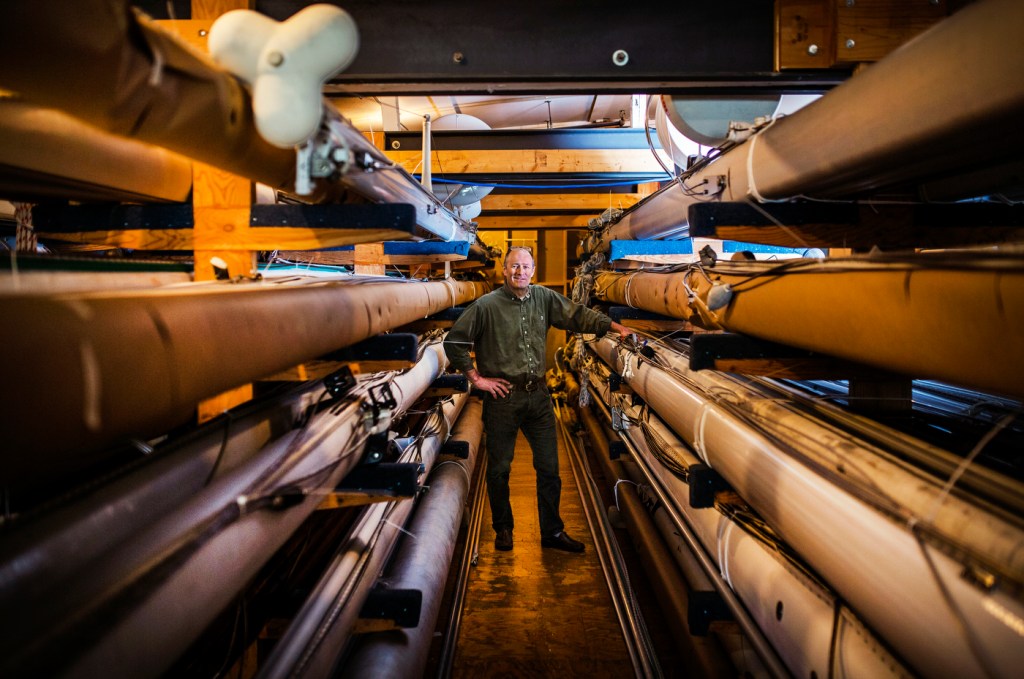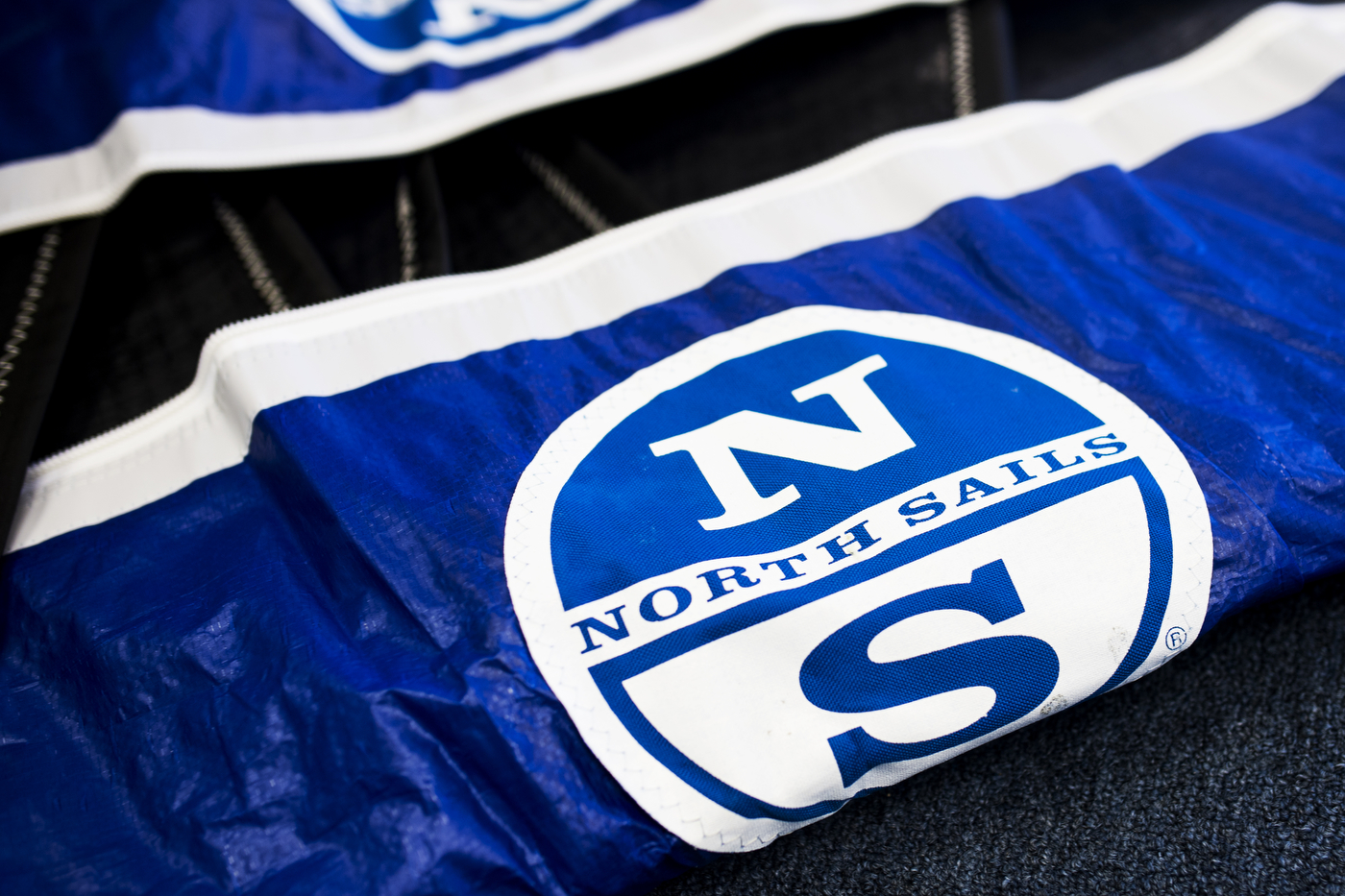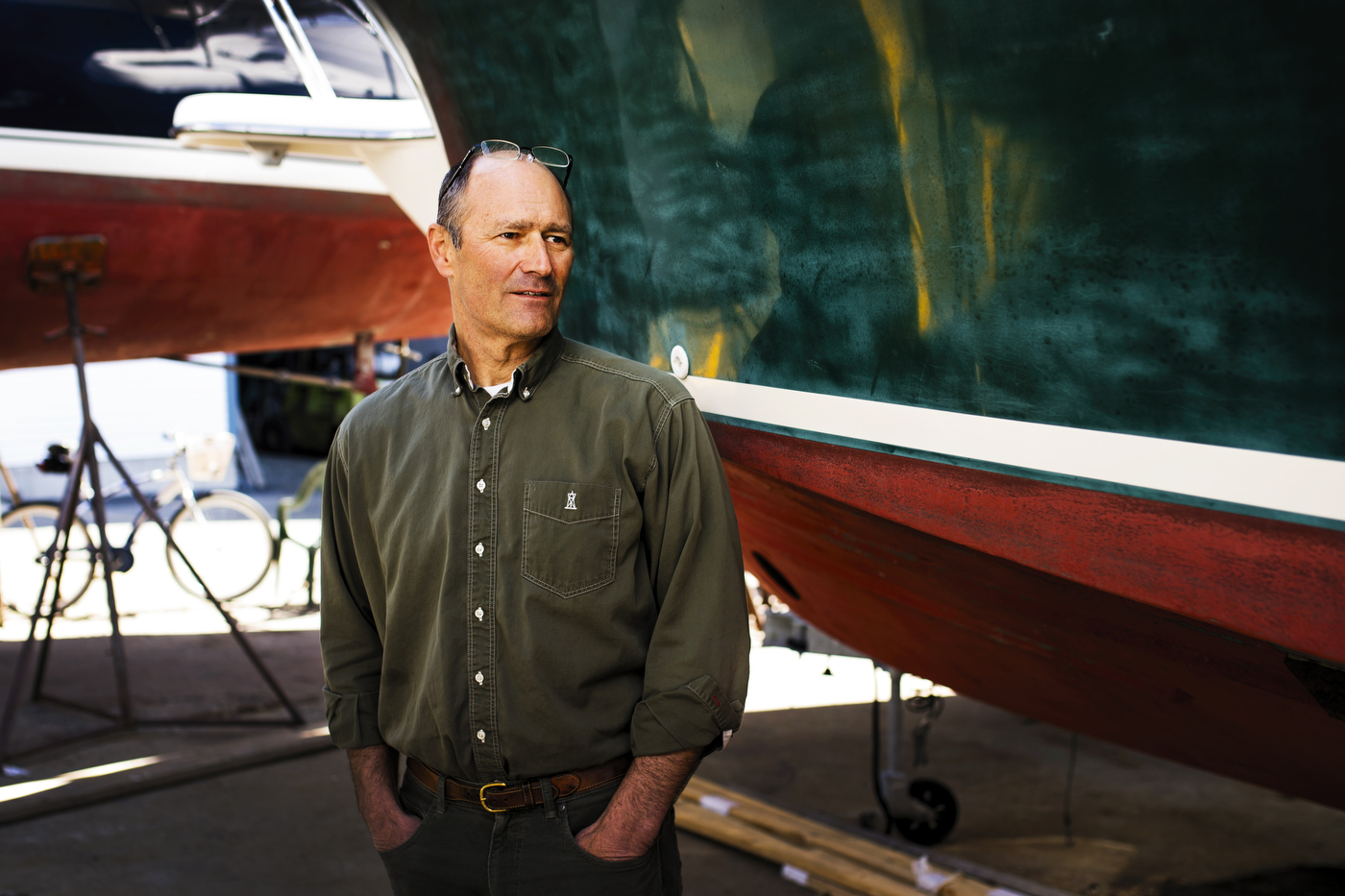Meet the Northeastern alum whose sails produced a transatlantic speed record and two America’s Cup victories

JB Braun, one of the top sail designers in the world, caught the bug at age 6 when he went sailing for the first time with his father. The boat was a beauty—a 38-foot wooden U.S. One with a knifelike hull designed for racing.
But it was the smaller boats in the distance that caught the boy’s attention.
“I saw these little boats being sailed by kids and thought: You mean I can do this myself?”
Braun’s first boat—an 11-foot Sea Snark made of Styrofoam—was the antithesis of the 1940s classic he had sailed with his father. But it was his. And it sparked Braun’s life-long love affair with everything nautical.
“I was in awe that the wind could power a boat like an engine, and that awe stays with me to this day,” he said.




Braun has built an international reputation by designing the sails that drive the biggest, fastest, most high-tech sailing machines on the planet. His sails powered ORACLE to its America’s Cup victories in 2010 and 2013. His sails propelled Nicorette across the Atlantic when it broke the 92-year-old transatlantic speed record in 1997. As head of a team of 80 sail designers from around the world, his creations have broken 25 world sailing records in the last four years.
That’s not a bad track record for a guy whose first boat was a Styrofoam Sea Snark.
Putting tech into sailing
As a mechanical engineering major at Northeastern in the 1980s, Braun, who graduated in 1985, developed a fascination with CAD/CAM technology. As always, sailing was on the forefront of his mind, and he decided to apply his studies to revolutionize sail design.

Because sails operate on the same principle as airplane wings, the shape and dimensions of the sail are crucial to maximizing the “lift” that pulls the boat forward. Braun has dedicated his career to creating advanced computer modeling systems that move design beyond the traditional trial-and-error methods of the past.
He spent all three of his co-ops working in a lab at MIT that was developing a computerized air-flow analysis system for Hood Sailmakers.
“You have to remember, this was in an era before Windows and even before PCs,” said Braun. “So computerized design was a new concept. When we were done, we had developed a proprietary CAD/CAM system that Hood used to design and manufacture its sails.”
Not surprisingly, Braun landed a job at Hood soon after graduation. But he had more on his mind than just making sails.
So close
Since he was a teenager, Braun had his eyes set on the Olympics. He said his decision to become a sail designer was conceived as a way to get the time he needed to train.
“There was no such thing as professional sailing back then, so I needed a job that would put me in the sailing world, provide the money to live, and give me the time off I needed,” he said.
In 1986, Braun won the silver medal in the Flying Dutchman class at the Good Will Games, and two years later he was ranked No. 1 in the nation at the beginning of the Olympic trials. But in an upset, another boat beat him out. So instead of fulfilling his dream of representing the United States at the 1988 Olympics, he went to Seoul, South Korea, as first alternate, where he helped train the U.S. team that beat him.
In spite of the disappointment, Braun said it was a “tremendous experience.”
“I learned a lot,” he said. “It was like the PhD of sailing.”
A career…
During these same years, Braun was making a name for himself as a pioneer in sail design. He worked for six years at Hood and nine years at Doyle Sailmakers before moving to North Sails in 1999.
His string of innovations is impressive. In 2000, he developed the Virtual Wind Tunnel at North Sails, which revolutionized the way wind flow is tested on downwind sails. The technology is still in use 18 years later.
In the materials realm, Braun led the engineering team that developed 3Di, a revolutionary sail material that’s stronger, lighter, and more stretch-resistant than the Mylar sails that had dominated the racing world for decades. In 2016, Thomas Coville used 3Di sails to break the solo round-the-world speed record. Braun’s sails have proved to be so durable that teams in the Volvo Ocean Race can now complete the grueling 35,000-mile race with a single mainsail, instead of carrying a set of three sails.
… and an adventure
Sailing will always be more than just an engineering challenge for Braun. When the maxi yacht Nicorette broke the transatlantic speed record set in 1905, Braun was both the sail designer and the helmsman.
“I love both the technology and the adventure of it,” he said.
The year was 1997, and the 14-person international crew was waiting in New York for the right weather conditions to make their oceanic sprint to England. It finally arrived on the last day of the month in the form of the famous April Fools blizzard that dumped three feet of snow on New England and wiped out power throughout the region.
“We sailed out of New York into the storm and rode it almost all the way to England,” said Braun. “It was snowing when we left.”
It was a wild ride—gale force winds, iceberg alerts, and curtains of freezing seawater crashing across the decks. When Braun tried to sleep down below, the walls of seawater that slammed against the hull sounded like a collision with a Mack truck.
“At times we had to slow down to keep the boat from breaking apart,” said Braun. “We lost a couple of sails and at one point the steering cable broke and the boat spun out of control into the wind while we were going 30 knots.”
Eventually, the storm spit them out off the coast of England, and the crew used Braun’s light air sails to slide past the Lizard Point finish line in record time. They had completed the 2,925-mile passage in 11 1/2 days, beating the 1905 record by 14 hours and 39 minutes.
Nineteen years later, the record was broken once again by the Comanche — using sails designed by JB Braun.






